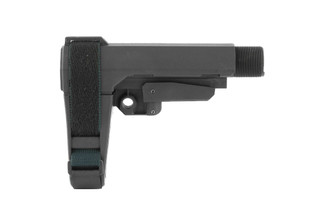Posted by Modulus Arms on 21st Sep 2021
Can you shoulder a pistol brace?
One of the things that our forefathers did not elaborate on when drafting the Second Amendment were specific details such as barrel length and overall weapon length. As a result from several decades of gun control agenda, rifles with barrel lengths shorter than 16” and an overall weapon length shorter than 26” are subject to a NFA tax of $200 and Title 1 form. If you are lucky, then this is all that you’ll face when getting your “SBR” (condolences to those living in non-free states).
However, by replacing your stock with something not legally defined as a stock — say a pistol brace, you can avoid having your firearm in “rifle” configuration and not be subject to SBR regulations. This has not sat well with legislators that have done their best to make sure that only their own personal private security and government personnel have short, black colored and scary looking tactical rifles. This begs the question: can you shoulder a pistol brace? Does putting the pistol brace on your shoulder turn your firearm into a short barreled rifle?
What are pistol braces?
Pistol stabilizing braces are devices that are designed to allow users to fire their firearm using only their wrist support. On AR pistols, this traditionally appears as something similar to a normal rifle stock. However, the “stock” material is flexible with the base consisting of two rubber-like straps looped together by a nylon/velcro fastener. The straps can
This design was commercially developed first by a US marine veteran, Alex Bosco, as a solution for a disabled veteran (who was rebuked by a range safety officer) when the veteran struggled to control their firearm. Bosco went on to found SB Tactical, which today provides pistol stabilizing braces for ARs, AKs, CZs, HK/B&T and other firearm platforms. The SB15 pistol brace has proven to become an overwhelming favorite amongst AR-15 owners.
Why buy a pistol brace?
Pistol braces took off in popularity not just for disabled shooters, but became a mainstream accessory in the market. For a time, there was an ATF policy that did not allow people to shoulder AR15s that had a pistol brace. Then, through a determination letter in 2017, the ATF stated that they found no issue with American shouldering AR15s that had pistol braces attached. In fact, the ATF specifically responded to a letter of inquiry that adding a pistol brace to a firearm (with a barrel length under 16”) would not re-classify the firearm as a short barreled rifle (SBR).
The small strap of velcro on the brace is all that stands between defining a gun owner as a felony and a perfectly legal firearm accessory. This provided an avenue for Americans to have a close quarter carbine-role firearm without having to request and pay the tax stamp for the right to do so which greatly increased the ownership and widespread usage of pistol braces for all sorts of guns.
What is the National Firearms Act?
The NFA (National Firearms Act) passed in 1934 made it mandatory to register firearms capable of full auto action as well as a number of firearms under a certain OAL (overall length). It also extends to any devices designed to mitigate the deafening sounds of gunshots. However, by enacting a $200 tax stamp (equal to $3947 in 2021) the impact was relatively the same as a ban on tax stamp items for those who couldn’t afford it, creating a difficult barrier that most Americans cannot overcome.
This applied to:
What kind of brace can I put on my AR pistol?
Any device designed to be a pistol stabilizing brace can be legally installed on your AR pistol as of 2021. The previously popular SB15(also known as Sig pistol brace) pistol stabilizing brace has now been discontinued, with various improved renditions of the SB15 now available on SB Tactical’s website. All of these alternatives to the sig pistol brace for the AR are compliant to current ATF regulations.
SBA3 ($169.99)
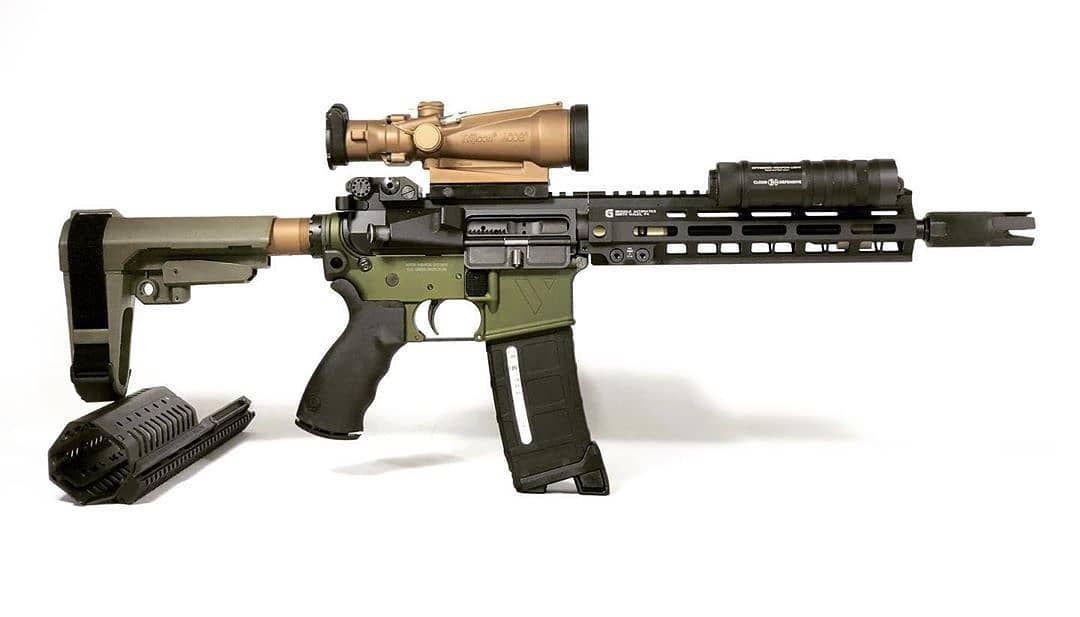
The SBA3 is a mil-spec carbine compatible brace allowing for five points of adjustment and an ambidextrous quick-detach sling mounting point in the rear. The SBA3 is designed to be minimalist for something like a PDW (Person defense weapon). This brace comes in the colors of FDE (flat dark earth), black, OD (olive drab green), and stealth black.
SBA4 ($169.99)
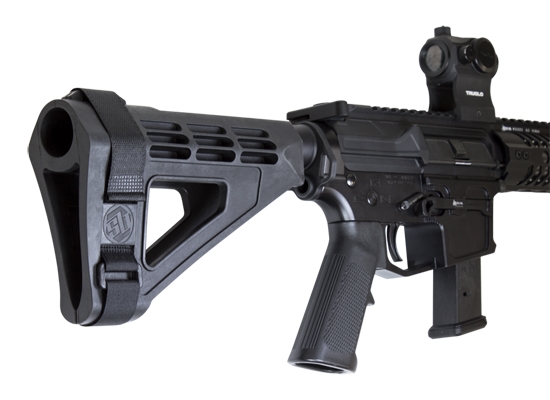
Although similar to the SBA3, the SBA4 is a thicker and firmer brace to the SBA3. The sturdier material will allow for better stability during rapid fire. It features an ambidextrous quick detach slot towards the front of the brace as well as a length adjustment lever that has to be depressed at the rear rather than the front like the SBA3.
HBPDW ($299.99 - 319.99)
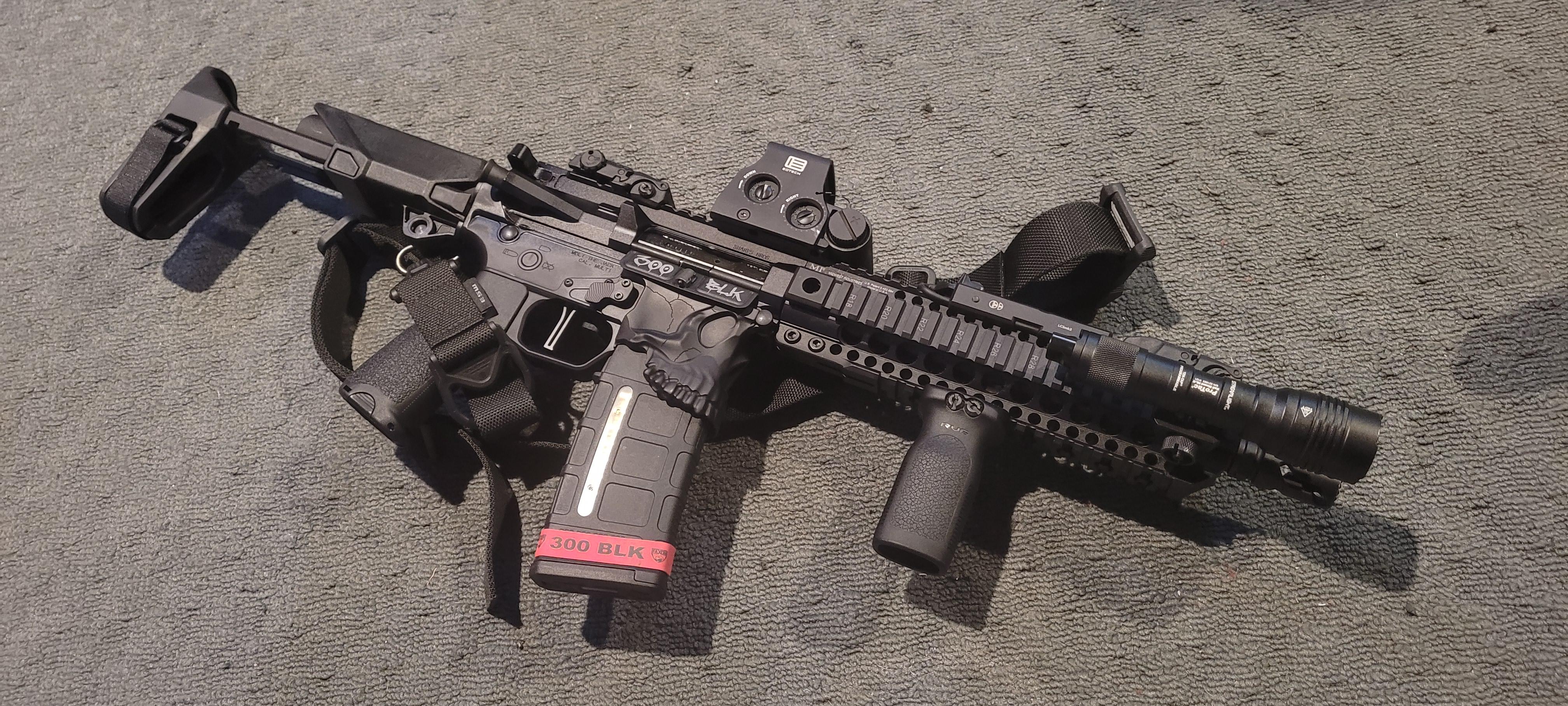
Shorter and lighter, we have a brace similar to that of the Honey Badger made famous by the ATF’s endorsement letter cease and desist letter. Designed by Q, the HBPDW(Honey Badger Personal Defense Weapon) brace is available in gray and black for AR-15 lowers.
SBPDW ($299.99)
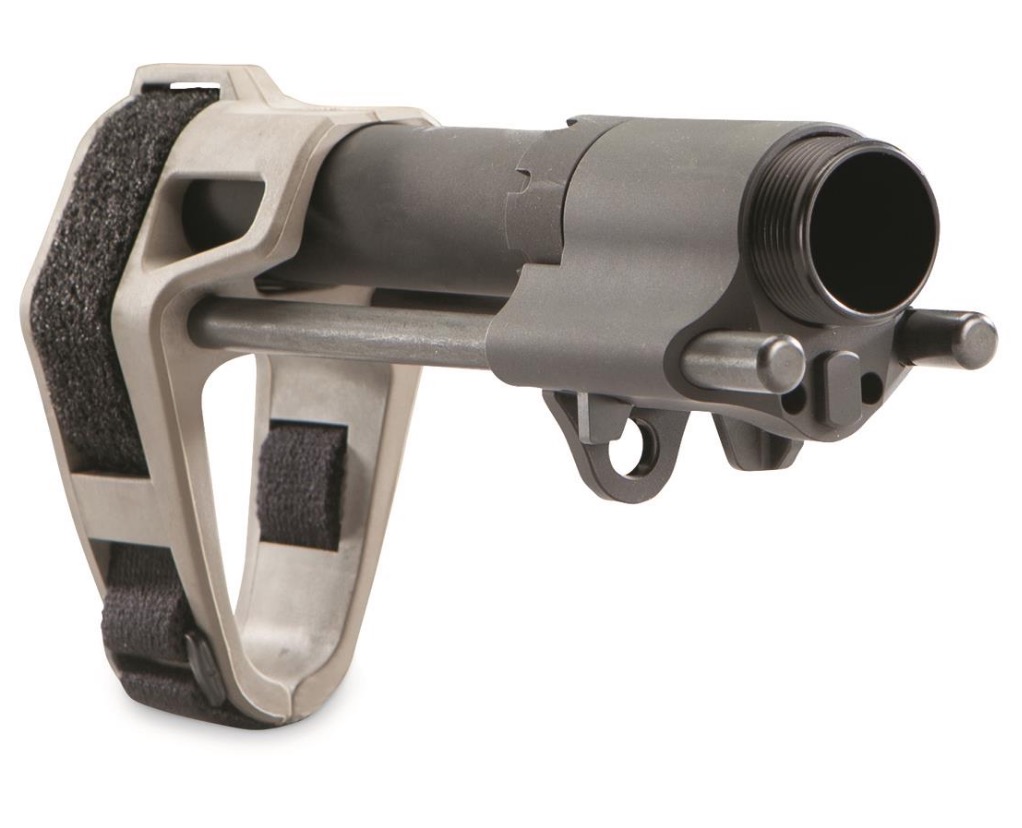
Partnered with Maxim Defense, the SBPDW adopts a simple pull-to-extend feature with three points of adjustment. The quick detach point sits below the tube housing around two inches from the base. This is a brace fashioned for a PDW style AR pistol.
SB-MINI ($79.99)
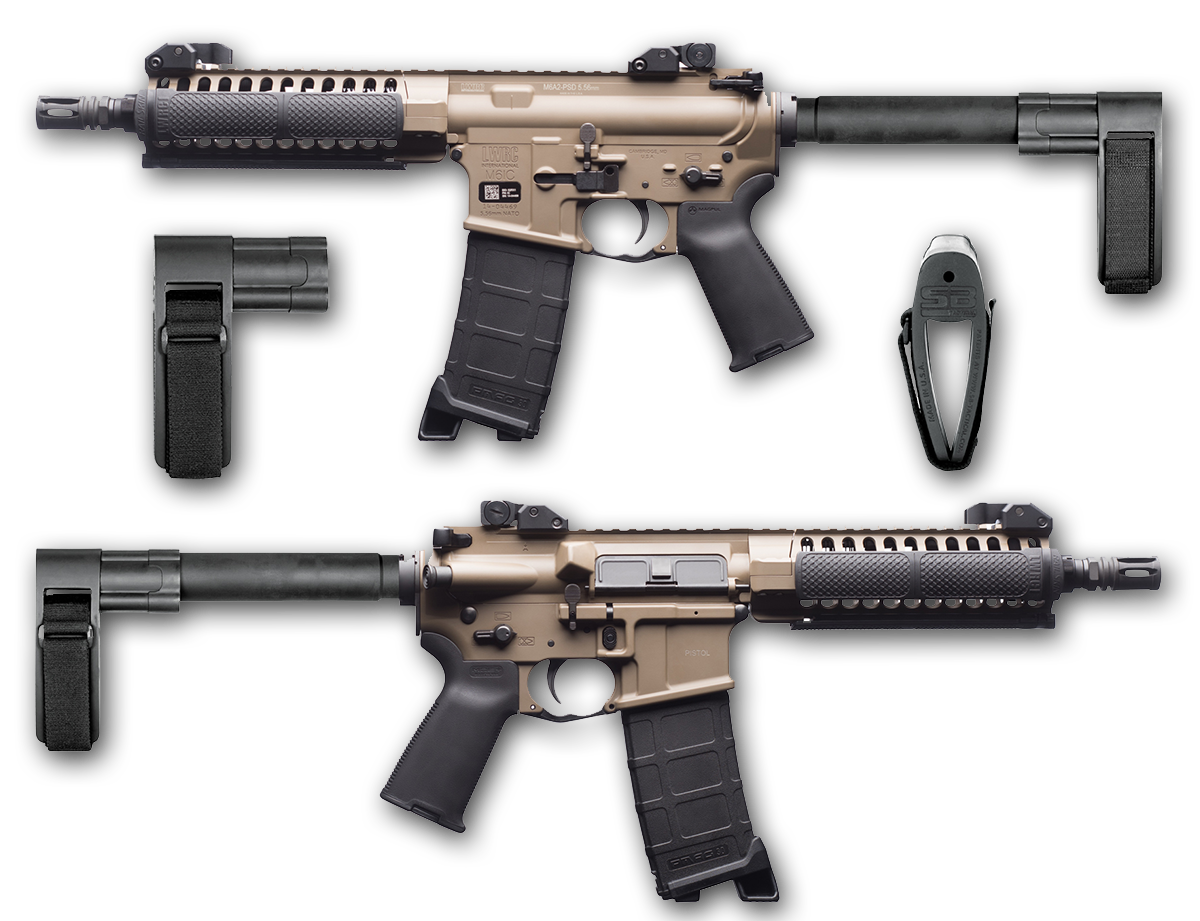
Presenting the lightest and minimalist available brace by SB Tactical for ARs, the SB-MINI. This is one of the most affordable stand-alone options for SB Tactical braces. However, if you find the brace rotating on the buffer tube during operations there is an anti-rotation HEX-MINI kit that runs for $109.95.
Legal History of Pistol Braces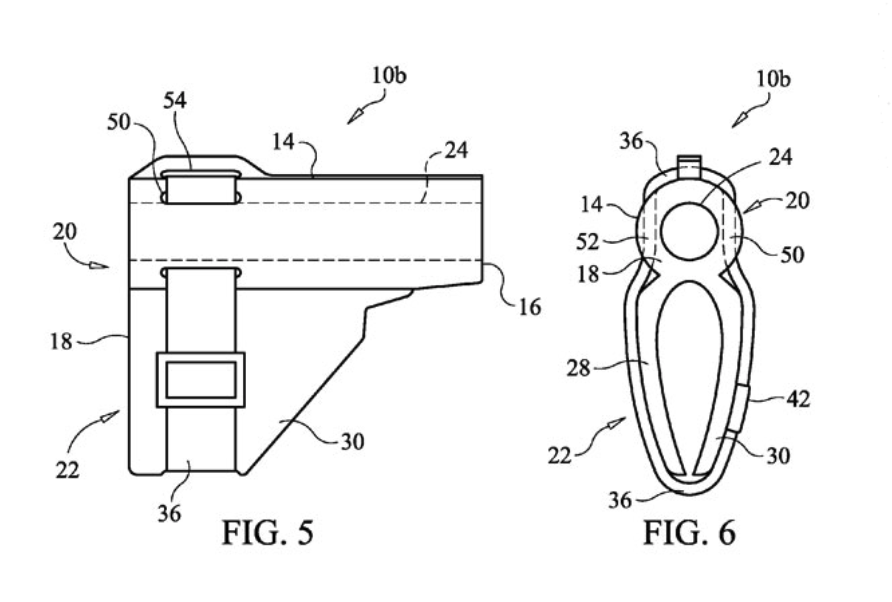
This is the timeline on the legality of pistol stabilizing braces as the ATF has flip flopped several times over the past decade.
November 2012: ATF approves pistol brace product for sale
SB Tactical was founded in 2012 and by November of that year, the ATF had approved the product to be legally sold to Americans stating, "the submitted brace, when attached to a firearm, does not convert that weapon to be fired from the shoulder and would not alter the classification of a pistol or other firearm. While a firearm so equipped would still be regulated by the Gun Control Act... such a firearm would not be subject to NFA controls."
March 4, 2014: Shouldering pistol brace is legal
In the first clarification letter on the legality of pistol braces, the ATF explained that it “does not classify weapons based on how an individual uses a weapon” implying that firearm accessories are classified by how the manufacturer designed the accessories to be used.
This meant that putting the pistol brace against your shoulders did not impact your firearm’s classification in any way (it would remain classified as a pistol).
January 16, 2015: Shouldering pistol brace is illegal
A year later however, the ATF decided against their previous policy and penned another letter:
“Any person who intends to use a handgun stabilizing brace as a shoulder stock on a pistol (having a rifled barrel under 16 inches in length or a smooth bore firearm with a barrel under 18 inches in length) must first file an ATF Form 1 and pay the applicable tax because the resulting firearm will be subject to all provisions of the NFA.”
This stirred plenty of controversy. If a weapon became classified based on how the user used it (rather than how it was designed), then the narrative asserted that you manufactured and redesigned the pistol brace simply by putting it against your shoulders. Similar to the logic of this question, “does using shoe laces in a way that an auto sear functions turn your shoelaces into a machine gun?”. To that question, the ATF answered yes. Shoe strings can be considered as machine guns.
This pistol brace ban overruled their previous decision of pistol braces not redesigning a firearm into a SBR despite how it’s used.
March 21, 2017: Shouldering pistol brace is legal (again)
After (and continued) backlash of this ruling from public comments and law firms representing SB Tactical, the ATF came to the conclusion that their idea of user usage redesigning the pistol brace would not be viable in the face of court proceedings. The result was this muddled statement:
“To the extent the January 2015 letter implied or has been construed to hold that incidental, sporadic, or situational use of an arm brace (in its original approved configuration) from a firing position at or near the shoulder was sufficient to constitute 'redesign', such interpretations are incorrect and not consistent with ATF's interpretation of the statute or the manner in which it has historically been enforced."
This new ruling has held that citizens may shoulder their pistol braces situationally, sporadically, and incidentally. Of course it would be immensely difficult to prove those three things for someone shouldering their pistol stabilizing braces short of the user announcing “I am habitually shouldering my stock and this is how I use it all the time” while being filmed by an ATF field agent as the user snips off the velcro strap. By having such wording, the ATF leaves open the window to nab someone for shouldering their pistol brace if they ever come across someone that they really really want to make an example out of.
June 7, 2021: Attorney General Signs ATF Proposed Rule 2021R-08
Pistol stabilizing braces are legal to shoulder and install on your pistols without reclassifying the status to rifle for now, but there are ongoing efforts to change that. The most recent one brought to us comes as “Factoring Criteria for Firearms with Attached ‘Stabilizing Braces” by the ATF as a Notice of Proposed Rule Making (NPRM). This is known as the proposal for the ATF’s pistol brace point system which can be found under ATF Worksheet 4999.
Every category under the proposed system would evaluate how many points the firearm earns toward being deemed a rifle rather than a braced handgun. Receiver over four points, then the firearm is considered a rifle and no longer a braced handgun. Below is the breakdown of how the ATF's new pistol brace point system would work:
Section I of pistol brace point system
For your pistol to move forward with the evaluation, it must first clear two criterias:
Section II of pistol brace point system
After fulfilling the two requirements in Section I you can move onto the main portion of the evaluation. Section II primarily covers the brace accessory itself.
Accessory Design
Your brace will be evaluated with the following:
Rear Surface Area
The back of the brace will be evaluated with the following:
Adjustability
Your brace’s ability to extend/telescope will earn another point.
Stabilizing Support
The final portion of Section 2 covers the miscellaneous of how similar your brace resembles something that is to be wrapped around an arm.
Section III of pistol brace point system
This section covers weapon configuration:
Length of brace pull
Measuring from the center of the trigger to the center of the brace:
Attachment Method
Brace Modifications
Any modifications to the brace’s strap or modification to the brace for shouldering capability are counted as followed:
Accessories
Handstops, sights and optics will also move your braced handgun into the rifle territory:
Can I keep my braced handgun if the ATF points system is passed?
No, grandfathering is not an option. If 2021R-08 is passed, this new rule would be forcing tens of millions of firearms in current legal possession to be registered with a $200 tax stamp, modified to no longer be in “SBR configuration”, or be forfeited/destroyed. If your braced gun was manufactured as a pistol by the OEM (Original Equipment Manufactured) company then you cannot simply remove your brace as something made first as a 'rifle' cannot be made into a 'pistol'. Then again, that is only if you're interested in remaining compliant with federal regulations.
Is the pistol brace point system available for comment?
The deadline for public comment on this proposal passed on September 8, 2021 at 11:59 PM eastern time. All that is left to do is wait for the ATF to announce plans to either move forward and change their current ruling of pistol stabilizing braces — or to scrap the plans for their new point system.
If you have any comments for future regulatory rules by the ATF, use the regulations.gov website to look up the relevant proposal (By VIN number or title of the document) and comment. A friendly reminder is to maintain professionalism in your comment as well as using your own words (spamming the comment section with the same copy and paste is counter-intuitive).

